
Metal forming solution is not only an important content of part design, but also an issue of great concern to manufacturers. It is also a key factor in the process of material processing. Today, Shenchong CNC press brake manufacturer will take you to learn more about the metal forming process.
The production method of pouring liquid metal into the mold cavity corresponding to the shape and size of the part and waiting for it to cool and solidify to obtain the blank or part is usually called metal liquid forming or casting.
Process flow:
Liquid Metal → Filling → Solidification Shrinkage → Casting
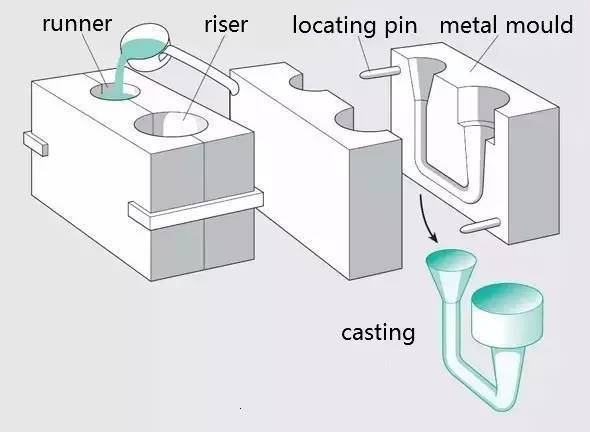
Process features:
- It can produce parts with arbitrarily complex shape, especially those with complex inner cavity shape.
- Strong adaptability. The type of alloy is not limited, and the size of castings is almost unlimited.
- Wide sources of materials. Scrap can be remelted. Low equipment investment.
- High scrap rate. Low surface quality. Poor working conditions.
Casting classification:
Sand casting, investment casting, pressure casting, low pressure casting, centrifugal casting, metal casting, vacuum casting, squeeze casting, lost foam casting, continuous casting.
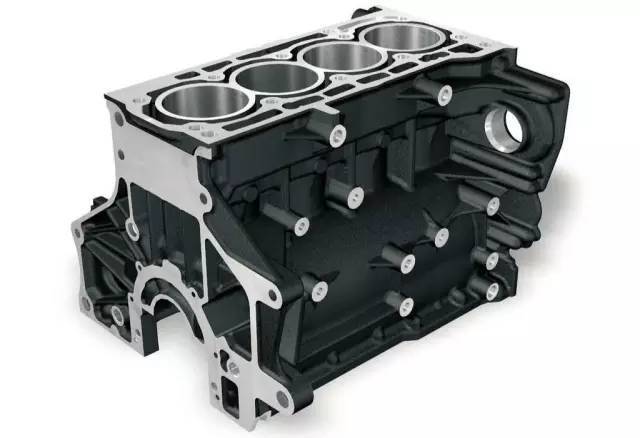
Sand casting is a casting method to produce castings in sand molds. Steel, iron and most non-ferrous alloy castings can be obtained by this method.
Process flow:
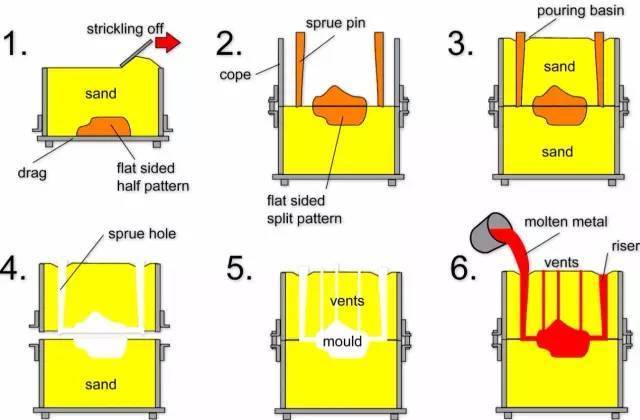
Technical features:
- It is suitable for making blanks with complex shape, especially with complex inner cavity.
- Wide adaptability. Low cost.
- For some materials with poor plasticity, such as cast iron, sand casting is the only forming process to manufacture their parts or blanks.
Applications:
Automobile engine cylinder block, cylinder head, crankshaft and other castings.
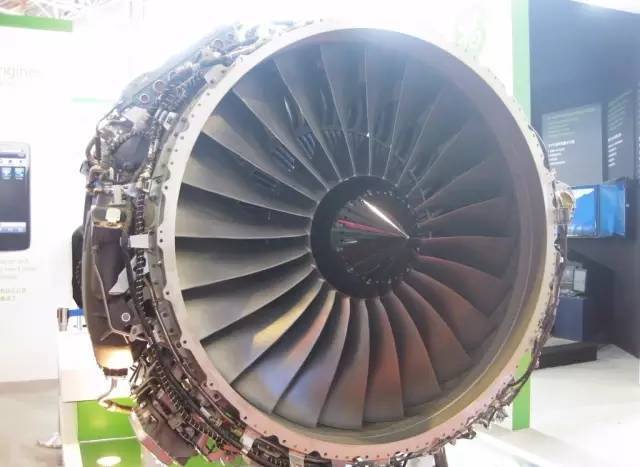
It usually refers to that the pattern is made of fusible materials, and several layers of refractory materials are coated on the surface of the pattern to make the mold shell. Then the pattern is melted and discharged from the mold shell, so as to obtain the mold without parting surface, which can be filled with sand after high-temperature roasting. It is often called "lost wax casting".
Advantages:
- High dimensional accuracy and geometric accuracy.
- High surface roughness.
- It can cast castings with complex appearance, and the cast alloy is not limited.
Disadvantages:
- The process is complicated.
- The cost is high.
Applications:
It is suitable for the production of small parts with complex shapes, high precision requirements or difficult other processing, such as blades of turbine engines.
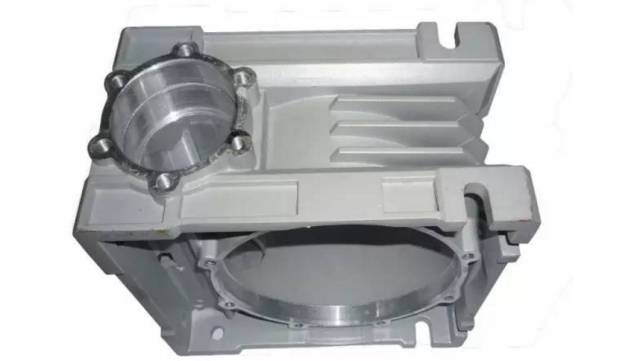
Die casting uses high pressure to press liquid metal into a precision metal mold cavity at high speed. Liquid metal is cooled and solidified under pressure to form castings.
Advantages:
- During die casting, the metal liquid bears high pressure and fast flow rate.
- Good product quality. Dimensional stability. Good interchangeability.
- High production efficiency. Die casting die can be used many times.
- Suitable for mass production. Good economic benefits.
Disadvantages:
- Castings are prone to small pores and shrinkage porosity.
- Low plasticity of die castings. It is not suitable to work under impact load and vibration.
- When high melting point alloy die casting, the service life of the mold is low, which affects the expansion of die casting production.
Application:
Die castings were first used in automobile industry and instrument industry. Later, it gradually expanded to various industries, such as agricultural machinery, machine tool industry, electronic industry, national defense industry, computer, medical equipment, clocks, cameras, daily hardware and other industries.
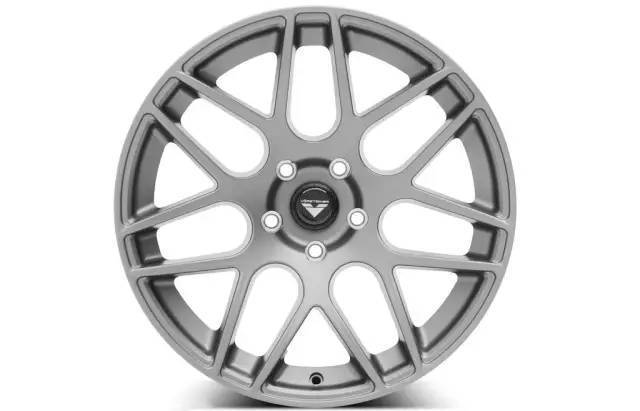
Low pressure casting refers to the method that liquid metal fills the mold under the action of low pressure (0.02 ~ 0.06MPa) and crystallizes under pressure to form castings.
Process flow:
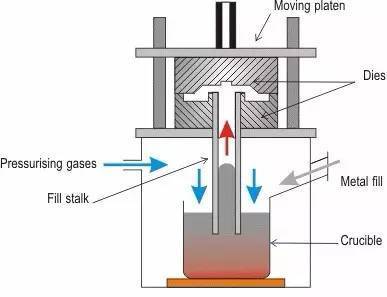
Technical features:
- The pressure and speed during pouring can be adjusted. It can be applied to various casting molds, such as metal molds, sand molds, etc. Casting various alloys and castings of various sizes.
- Bottom injection filling. The liquid metal filling is stable without splash phenomenon. It can avoid being involved in gas and scouring the mold wall and core. Improve the qualification rate of castings.
- The casting crystallizes under pressure. Castings are dense. Clear outline. Smooth surface. High mechanical properties. It is especially beneficial for the casting of large thin-walled parts.
- The feeding riser is omitted. The metal utilization rate is increased to 90~ 98%.
- Low labor intensity. Good working conditions. Simple equipment. Easy to realize mechanization and automation.
Applications:
Mainly traditional products, such as cylinder head, wheel hub, cylinder frame, etc.
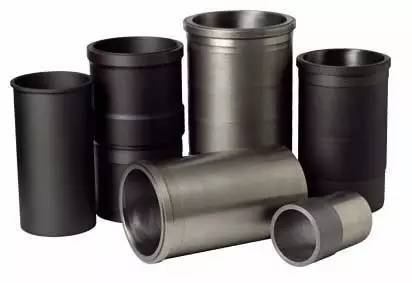
Centrifugal casting is a method in which liquid metal is poured into a rotating mold, filled into the mold under the action of centrifugal force and solidified.
Advantages:
- Almost no metal consumption of gating system and riser system. Improve the process yield.
- The core can not be used in the production of hollow castings. Therefore, the metal filling ability can be greatly improved in the production of long tubular castings.
- The density of castings is high. There are few defects such as pores and slag inclusion. High mechanical properties.
- It is convenient to manufacture barrel and sleeve composite metal castings.
Disadvantages:
- There are some limitations in the production of special-shaped castings.
- The inner hole diameter of the casting is inaccurate. The inner hole surface is rough. Poor quality. Large machining allowance.
- Castings are prone to specific gravity segregation.
Applications:
Centrifugal casting was first used to produce cast pipes. Centrifugal casting process is used to produce steel, iron and non-ferrous carbon alloy castings in metallurgy, mining, transportation, drainage and irrigation machinery, aviation, national defense, automobile and other industries.
Among them, the production of castings such as centrifugal cast iron pipe, cylinder liner and shaft sleeve of internal combustion engine is the most common.
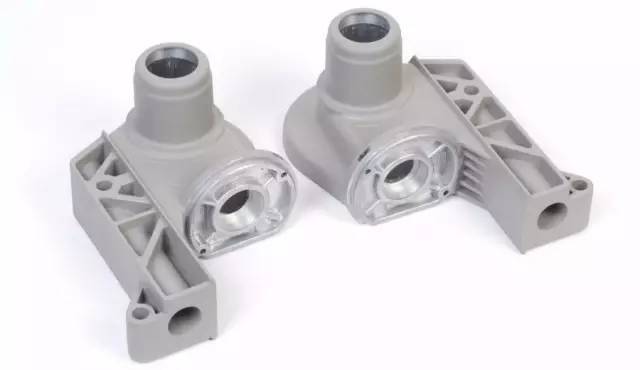
It refers to a molding method in which liquid metal fills the metal mold under the action of gravity and cools and solidifies in the mold to obtain castings.
Process flow:
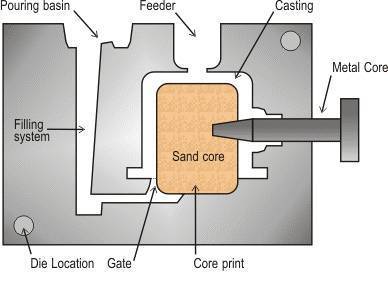
Advantages:
- The thermal conductivity and thermal capacity of metal mold are large. Fast cooling speed. The casting structure is dense. The mechanical properties are about 15% higher than those of sand castings.
- Castings with high dimensional accuracy and low surface roughness can be obtained. Good quality and stability.
- Because the sand core is not used or rarely used. Improve the environment and reduce dust and harmful gases. Reduce labor intensity.
Disadvantages:
- The metal type itself has no air permeability. Certain measures must be taken to export the air in the cavity and the gas produced by the sand core.
- Gravity die metal type has no concession. Cracks are easy to occur during solidification of castings.
- The manufacturing cycle of gravity die metal mold is long. High cost. Only in mass production can it show good economic results.
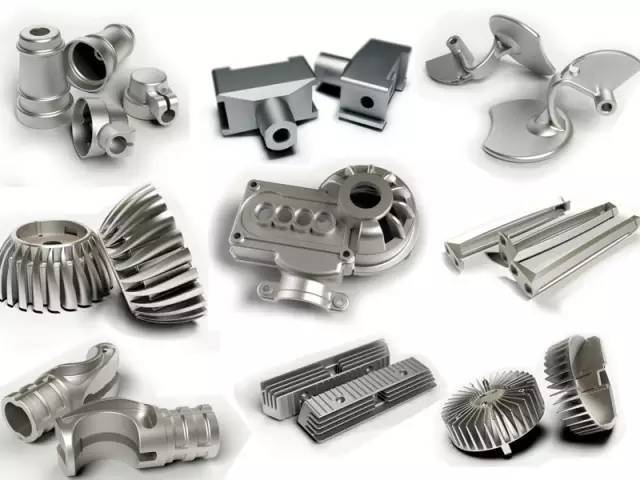
Vacuum casting is an advanced die-casting process that eliminates or significantly reduces the porosity and dissolved gas in die-casting parts by pumping out the gas in the die-casting mold cavity during die-casting, so as to improve the mechanical properties and surface quality of die-casting parts.
Process flow:
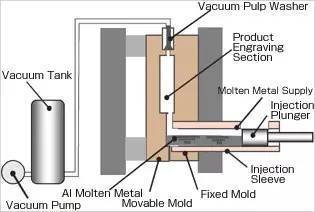
Advantages:
- Eliminate or reduce air holes in die castings. Improve the mechanical properties and surface quality of die castings. Improve plating performance.
- Reduce the back pressure of the cavity. Alloys with low specific pressure and poor casting performance can be used. It is possible to die cast larger castings with small machines.
- The filling conditions are improved. Thin castings can be die cast.
Disadvantages:
- The sealing structure of die is complex. It is difficult to manufacture and install. So the cost is high.
- If the vacuum die casting method is not properly controlled, the effect is not very significant.
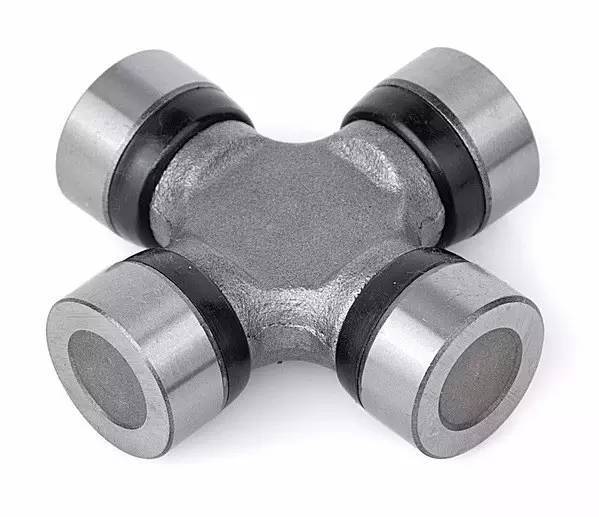
Squeeze die casting is a method to make liquid or semi-solid metal solidify and flow under high pressure to directly obtain parts or blanks.
It has the advantages of high utilization rate of liquid metal, simplified process and stable quality. This is an energy-saving metal forming technology with potential application prospects.
Process flow:
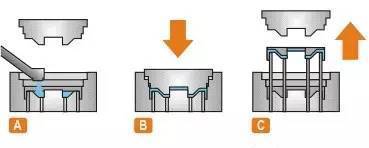
Types:
- Direct squeeze casting: coating spraying, alloy pouring, mold closing, pressurization, pressure maintaining, pressure relief, mold splitting, blank demoulding and resetting.
- Indirect squeeze casting: coating spraying, mold closing, feeding, mold filling, pressurization, pressure holding, pressure relief, parting, blank demoulding and resetting.
Technical features:
- It can eliminate internal defects such as pores, shrinkage cavities and porosity.
- Low surface roughness. High dimensional accuracy.
- It can prevent the occurrence of casting cracks.
- It is convenient to realize mechanization and automation.
Applications:
It can be used to produce various types of alloys, such as aluminum alloy, zinc alloy, copper alloy, nodular cast iron, etc.
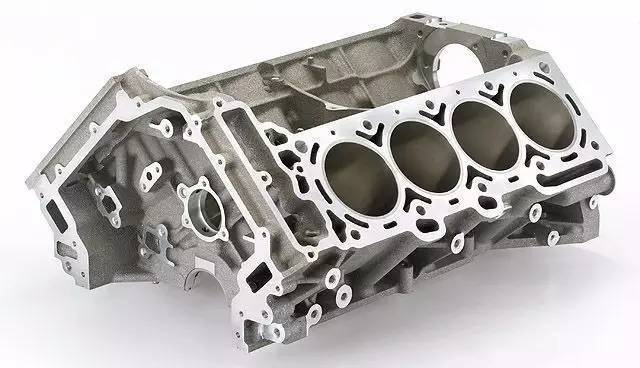
Lost foam casting is also known as solid casting. It is a combination of paraffin or foam models similar in size and shape to the casting into a model cluster, brushed with refractory paint and dried, buried in dry quartz sand and vibrated for modeling. The new casting method is a new casting method in which the model is gasified by pouring down, and the liquid metal occupies the position of the model, and solidifies and cools to form a casting.
Process flow:
Pre foaming → foaming molding → coating dipping → drying → modeling → pouring → sand dropping → cleaning
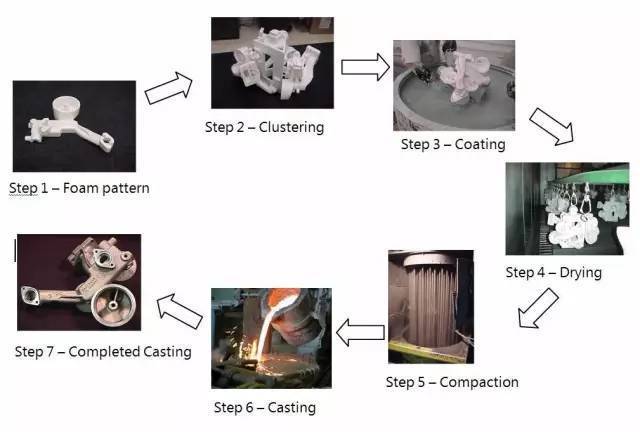
Technical features:
- High precision castings. No sand core. Reduce processing time.
- No parting surface. Flexible design. High degree of freedom.
- Clean production, no pollution.
- Reduce investment and production costs.
Applications:
It is suitable for producing precision castings of various sizes with complex structure. There is no limit to the type of alloy. Production batch is not limited. For example, gray cast iron engine box, high manganese steel elbow, etc.
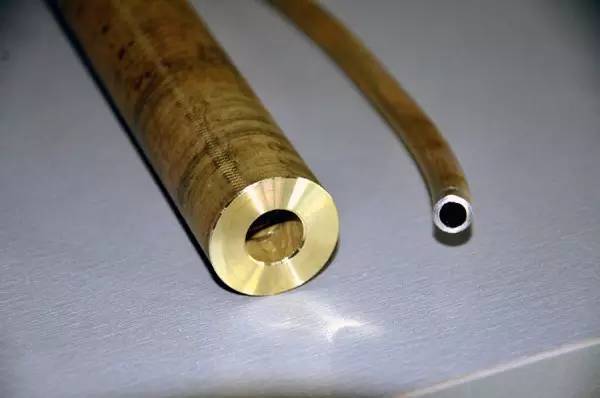
Continuous casting is an advanced casting method. The principle is to continuously pour molten metal into a special metal mold called crystallizer. The solidified (crusted) casting is continuously pulled out from the other end of the mold, which can obtain castings of any length or specific length.
Process flow:
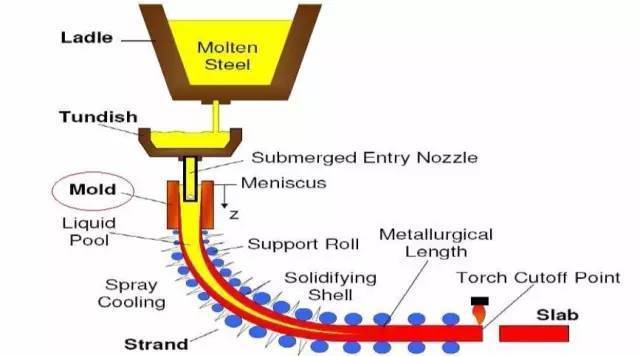
Technical features:
- As the metal is cooled rapidly, the crystal is dense and the structure is uniform. Good mechanical properties.
- Save metal and improve yield.
- Simplify the process and avoid modeling and other processes. Therefore, the labor intensity is reduced. The required production area is also greatly reduced.
- Continuous casting production is easy to realize mechanization and automation and improve production efficiency.
Applications:
The continuous casting method can be used to cast long castings with unchanged cross-section shape, such as steel, iron, copper alloy, aluminum alloy and magnesium alloy, such as ingot, slab, bar blank, pipe, etc.
Plastic forming is a process method that uses the plasticity of materials to process parts with less or no cutting under the action of external forces from tools and molds.
There are many types of it, mainly including forging, rolling, extrusion, drawing, punching and so on.
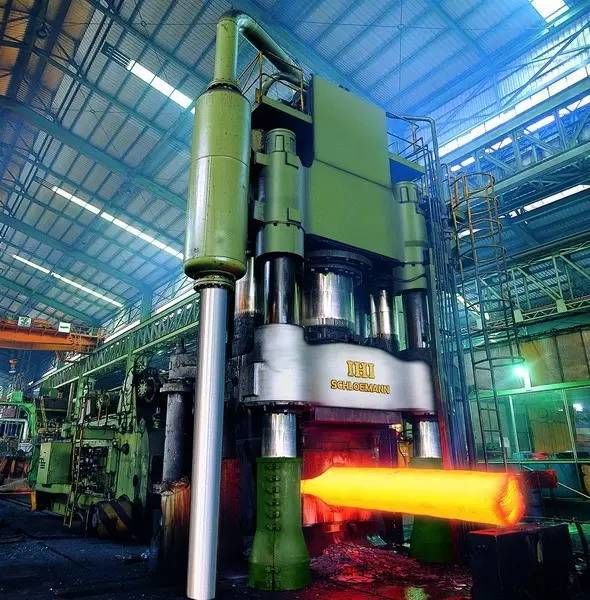
Forging is a processing method that uses a forging machine to apply pressure to a metal blank to plastically deform it to obtain a forging with certain mechanical properties, certain shape and size.
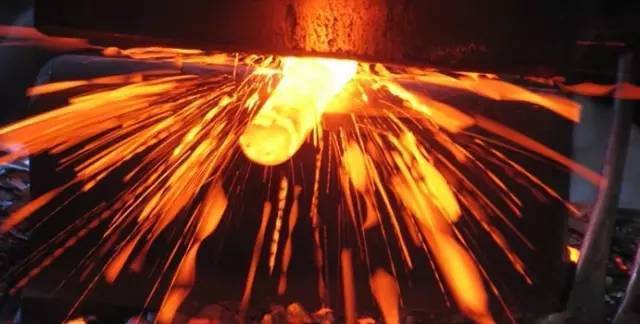
According to the metal forming mechanism, forging can be divided into free forging, die forging, ring rolling and special forging.
Free forging:
Generally, it is a processing method of hammering metal ingots or blocks into the required shape and size with simple tools on hammer forging or hydraulic press.
Die forging:
This is formed using a die on a die forging hammer or hot die forging press.
Roller ring:
This refers to the production of ring parts with different diameters by special equipment ring mill, which is also used to produce wheel parts such as automobile hub and train wheel.
Special forging:
Including roll forging, cross wedge rolling, radial forging, liquid die forging and other forging methods. These methods are more suitable for the production of some special shape parts.
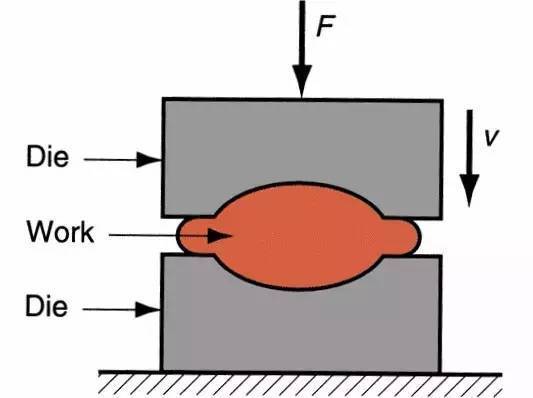
Process flow:
Forging blank heating → roll forging blank preparation → die forging metal forming → trimming → punching → correction → intermediate inspection → forging heat treatment → cleaning → correction → inspection
Technical features:
- The quality of forgings is higher than that of castings, and can withstand large impact force. The plasticity, toughness and other mechanical properties are also higher than those of castings, even higher than those of rolled pieces.
- Save raw materials. It can also shorten the processing hours.
- High production efficiency.
- Free forging is suitable for single piece and small batch production. Quite flexible.
Applications:
Rolls, herringbone gears of large rolling mills, rotors, impellers, and retaining rings of steam turbine generator sets, working cylinders and columns of huge hydraulic presses, locomotive shafts, crankshafts and connecting rods of automobiles and tractors, etc.
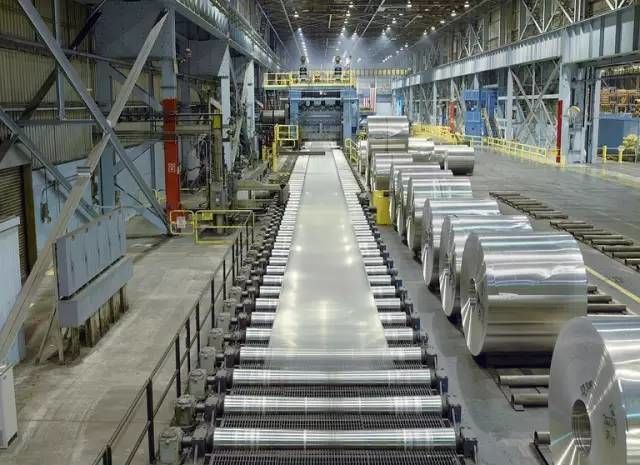
It is a press working method in which a metal billet is passed through a gap (various shapes) of a pair of rotating rolls, and the cross-section of the material is reduced and the length is increased due to the compression metal forming and rolling of the rolls.
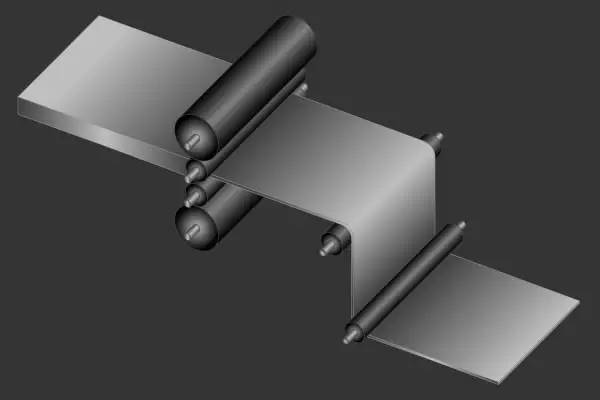
Rolling classification:
According to the movement of the rolling piece, it is divided into: vertical rolling, horizontal rolling, cross rolling.
- Vertical rolling: It is a process in which metal passes between two rolls that rotate in opposite directions, and plastic deformation occurs between them.
- Horizontal rolling: The moving direction of the rolled piece after deformation is consistent with the direction of the roll axis.
- Cross rolling: The rolling piece is in helical motion, and the rolling piece and the roll axis are not at a special angle.
Process flow:
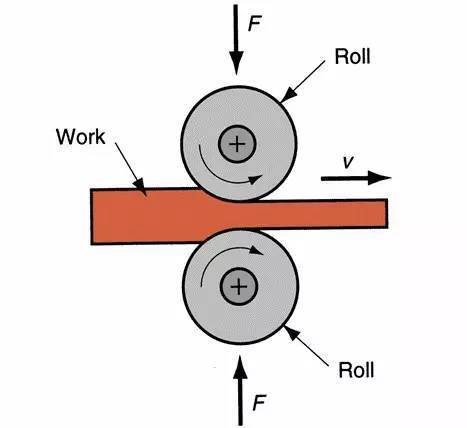
Applications:
It is mainly used in metal materials, profiles, plates, pipes, etc., and some non-metallic materials, such as plastic products and glass products.
Want to Know More About Sheet Metal Rolling Machine
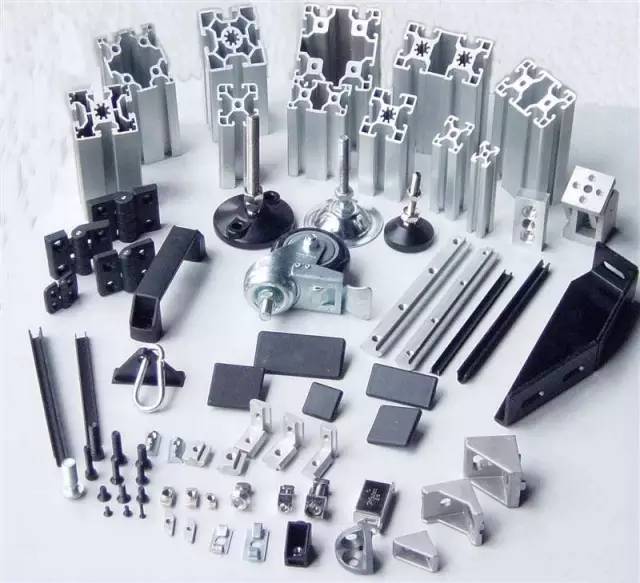
Under the action of three-dimensional uneven compressive stress, the blank is extruded from the orifice or gap of the die to reduce its cross-sectional area and increase its length. The processing method of the required product is called extrusion. This processing of blank is called extrusion molding.
Process flow:
preparation before extrusion → heating of cast rods → extrusion → stretching, twisting and straightening → sawing (sizing) → sampling inspection → artificial aging → packaging and storage
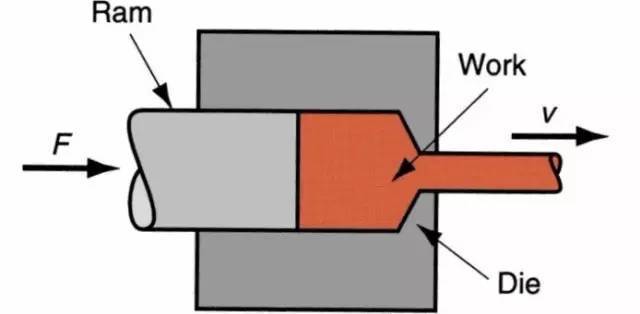
Advantages:
- Wide production range. Product specifications and varieties.
- Great production flexibility. Suitable for small batch production.
- The product has high dimensional accuracy. Surface quality is good.
- Equipment investment is low. The factory area is small. Easy to realize automatic production.
Disadvantage:
- Large loss of geometric waste.
- Metal flows unevenly.
- The extrusion speed is low. Auxiliary time is long.
- Tool wear and tear. High cost.
Applications:
It is mainly used for the manufacture of long rods, deep holes, thin walls and special-shaped sections.
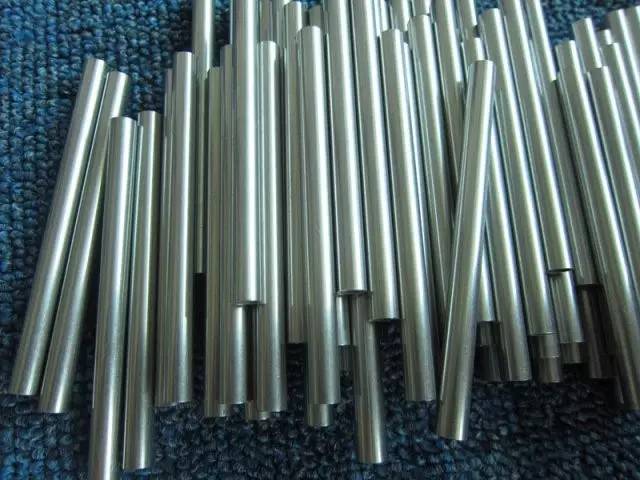
A plastic processing method in which a metal blank is pulled out from a die hole smaller than the section of the blank by an external force acting on the front end of the pulled metal to obtain a product of corresponding shape and size.
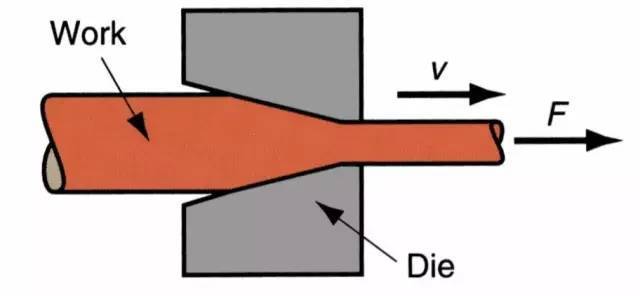
Advantages:
-Accurate size, smooth surface.
- Tools and equipment are simple.
- Continuous high-speed production of long products with small cross-sections.
Disadvantages:
- The amount of deformation in the pass and the total amount of deformation between the two anneals are limited.
- Length is limited.
Applications:
Drawing is the main processing method for metal pipes, bars, profiles and wires.
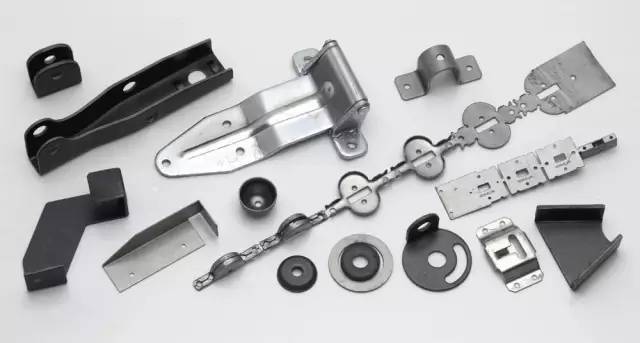
It is a forming and processing method of applying external force to plate, strip, pipe and profile by press and die to produce plastic deformation or separation, so as to obtain the work piece with the required shape and size.
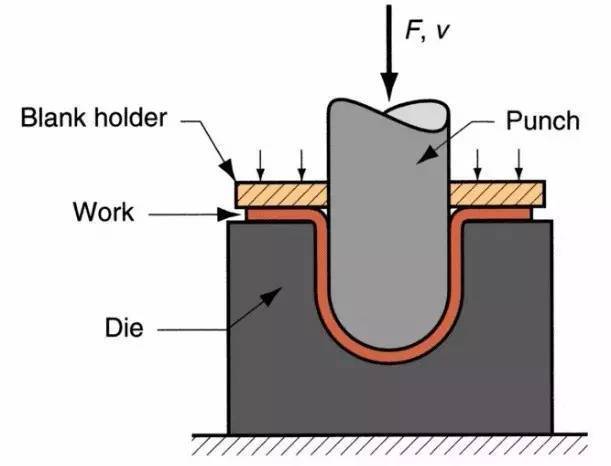
Technical features:
- Products with light weight and high rigidity can be obtained.
- Good productivity. Suitable for mass production and low cost.
- Products of uniform quality can be obtained.,
- High material utilization. Good shearing and recovery.
60 ~ 70% of the steel in the world is plate, most of which are made into finished products by press punching or bending.
Automobile body, chassis, oil tank, radiator sheet, boiler drum, container shell, iron core and silicon steel sheet of motor and electrical appliances are all stamped. There are also a large number of stamping parts in instruments, household appliances, bicycles, office machinery, household utensils and other products.
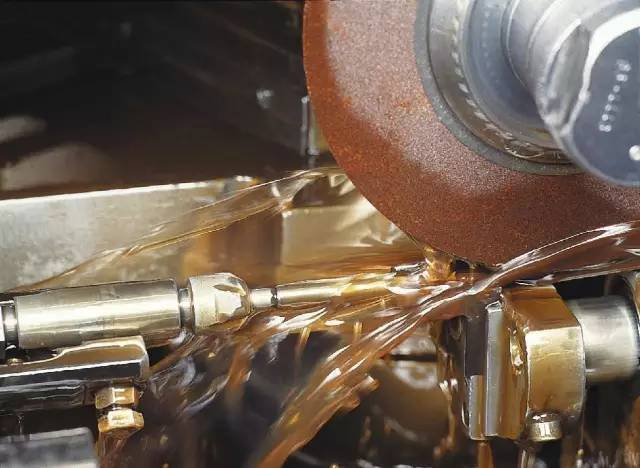
Machining is the process of cutting off the thickness of excess metal layer on the blank directly with a tool in the production process of parts, so as to meet the technical requirements of dimensional accuracy, mutual accuracy of shape and position, surface quality and so on.
Common machining methods:
Main processing range of common machining methods | ||||||||
Method
| Turning | Milling | Planing | Drilling | Boring | Grinding | Gear machining | CNC machining |
Machining shape | Rotary Face | Plane | Larger plane | Internal rotary surface | Larger internal rotary surface | Finishing various surfaces | Involute tooth profile | Complex shapes and high precision surface |
Tool | Turning Tool | Milling cutter | Planer | Drill bit | Boring cutter | Grinding wheel | Gear machining tool | CNC tool |
Equipment | Lathe | Milling machine | Planer | Drilling machine | Boring machine | Grinding machine | Gear processing machine | CNC machine |
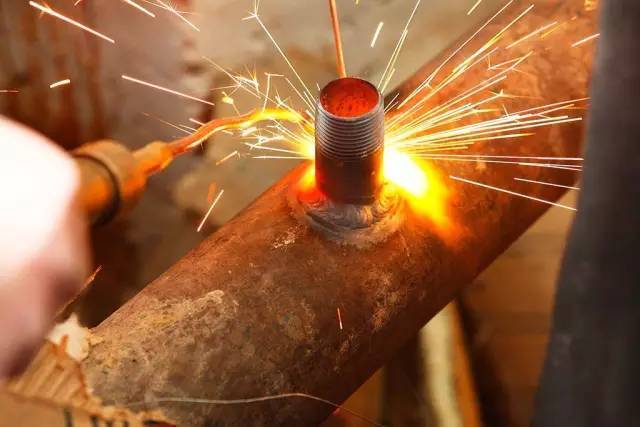
Welding is also called fusion. Fusion bonding is a manufacturing process and technology of joining metals or other thermoplastic materials such as plastics by heating, high temperature or high pressure.
Welding classification:
- Fusion welding: The method of using a certain heat source to locally melt the connected parts of the components into a liquid, and then crystallize into a whole after cooling is called fusion welding.
- Pressure welding: Use physical effects such as friction, diffusion and pressure to overcome the unevenness of the two connecting surfaces, remove the oxide film and its contaminants, and make the atoms on the two connecting surfaces approach each other to the lattice distance, so as to achieve solid state conditions. method of connection.
- Brazing: Use a material with a lower melting point than the base metal as the solder, and heat the weldment and the solder to a temperature higher than the melting point of the solder but lower than the melting point of the base metal. The liquid solder fills the joint gap by capillary action, melts the solder to wet the surface of the base metal, and crystallizes to form a metallurgical bond after cooling.
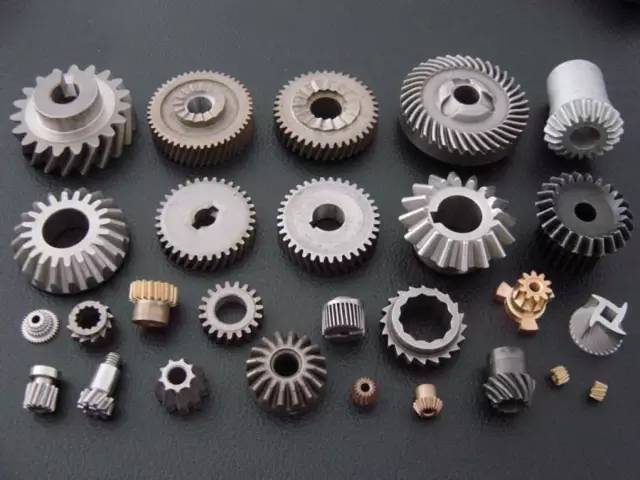
Powder metallurgy is the technology of making metal or using metal powder (or the mixture of metal powder and non-metallic powder) as raw material, forming and sintering, and manufacturing metal materials, composites and various types of products.
Basic process flow:
raw material → stirring → metal forming → secondary processing → vibration grinding → sintering → heat treatment → surface treatment → quality inspection → finished product
Advantages:
- Most refractory metals and their compounds, pseudo-alloys, and porous materials can only be manufactured by powder metallurgy methods.
- Save metal and reduce product cost.
- It will not pollute the material. It is possible to produce high purity materials.
- Powder metallurgy can ensure the correctness and uniformity of material composition.
- Powder metallurgy is suitable for producing a large number of products with the same shape. Greatly reduce production costs.
Disadvantage:
- The size of the part is taken into account when there is no batch size.
- The cost of the mold is relatively higher than that of the casting mold.
Applications:
Powder metallurgy technology can directly make porous, semi-dense or fully dense materials and products, such as oil-impregnated bearings, gears, cams, guide rods, tools, etc.
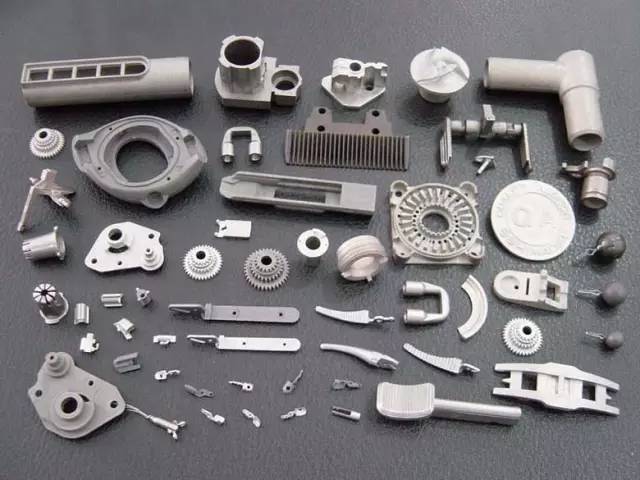
MIM is the abbreviation of metal injection molding. It is a molding method in which a plasticized mixture of metal powder and its binder is injected into a mold. It is firstly mixing the selected powder with a binder, then granulating the mixture and then injection molding the desired shape.
Process flow:
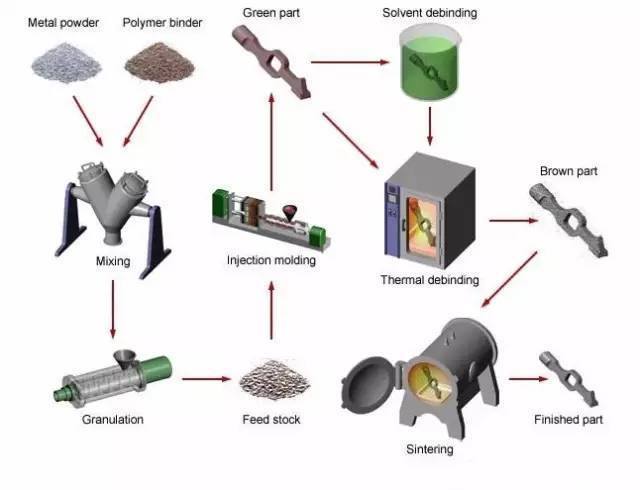
The process is divided into four unique processing steps: mixing, sheet metal forming, debinding and sintering to achieve the production of parts. Determine whether surface treatment is required according to product characteristics.
Technical features:
- One time molding is responsible for parts.
- Good surface quality, low scrap rate, high production efficiency and easy to realize automation.
- Low requirements for mold materials.
Technical core:
Adhesive is the core of MIM technology. Only when a certain amount of adhesive is added, the powder can enhance the fluidity to be suitable for injection molding and maintain the basic shape of green blocks.
Semi solid forming uses the unique rheological and stirring properties of non dendritic semi-solid metals (SSM) to control the quality of castings.
Semi solid forming can be divided into rheoforming and thixoforming for sheet metal.
Rheoforming
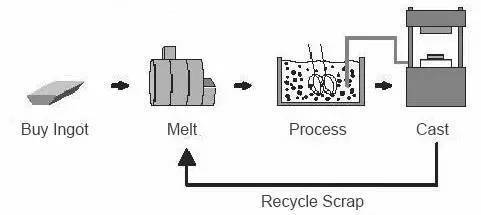
Thixoforming
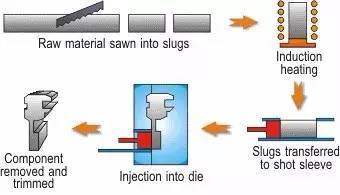
Technical Features:
- Reduce liquid forming defects and significantly improve quality and reliability.
- The molding temperature is lower than the full liquid molding temperature, which greatly reduces the thermal shock to the mold.
- Alloys can be made that are not possible with conventional liquid forming methods.
Application:
At present, it has been successfully used in the manufacture of master cylinders, steering system parts, rocker arms, engine pistons, wheel hubs, transmission system parts, fuel system parts and air conditioning parts, etc. in aviation, electronics and consumer goods.
3D printing is a type of rapid prototyping technology. It is a technique of constructing objects by layer-by-layer printing using bondable materials such as powdered metal or plastic, based on digital model files.
3D printing technology comparison:
FDM Melt extrusion molding | SLA photocuring molding | SLS Selective laser sintering | 3DP 3D printing | |
Material | Wax, ABS, PC, ppsf, nylon, PLA and other thermoplastic materials Feed in filaments | Liquid photosensitive resin | Wide range of materials: thermoplastic materials, resin coated sand (coated sand) | Ceramic powder, metal powder |
Method | Melt extrusion molding | UV light (UV) irradiation (wavelength x = 325mm, intensity = 30mw) to achieve photopolymerization curing molding | Polycarbonate, metal powder, ceramic powder, sintering molding of high intensity CO2 laser | Micro drop spray adhesive (such as silica gel) molding |
Layer thickness accuracy | 0.15-0.4mm | 0.016-0.15mm | 0.08-0.15mm | 0.013-0.1mm |
Support | If necessary | requires | No need | No need |
Features | Easy to use and maintain Low cost Desktop level is the most widely used | the highest precision molding method at present | It is widely used in large-scale structural design For example, aerospace | High speed colorful forming |